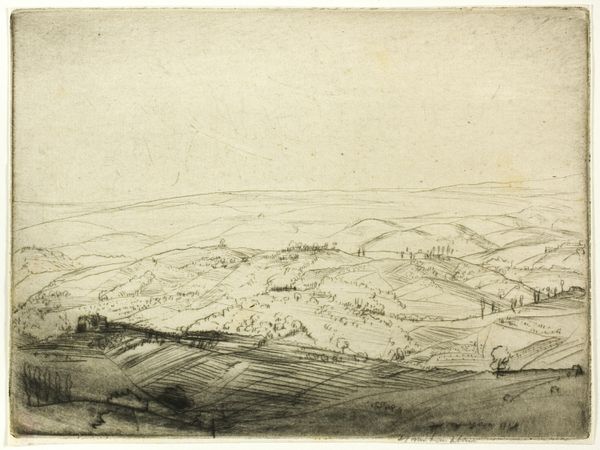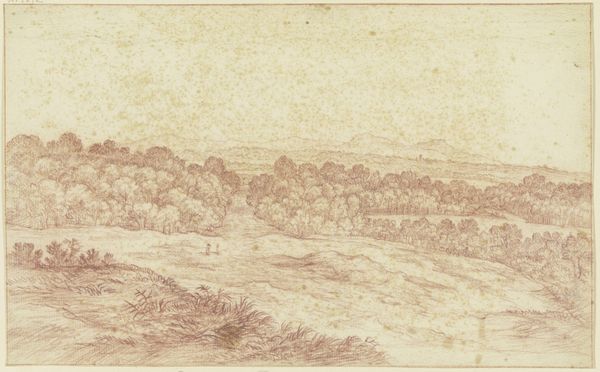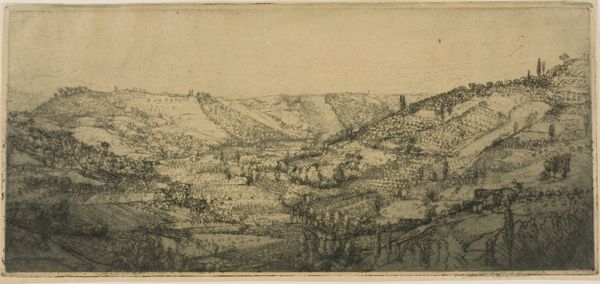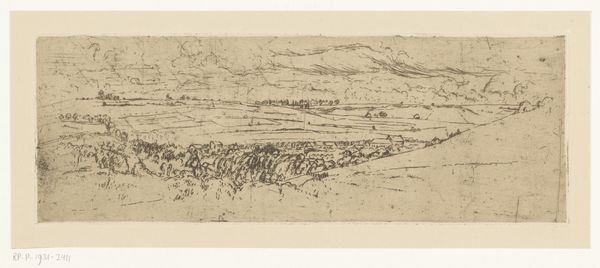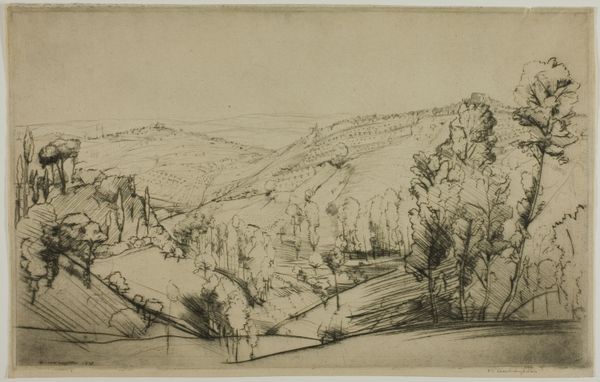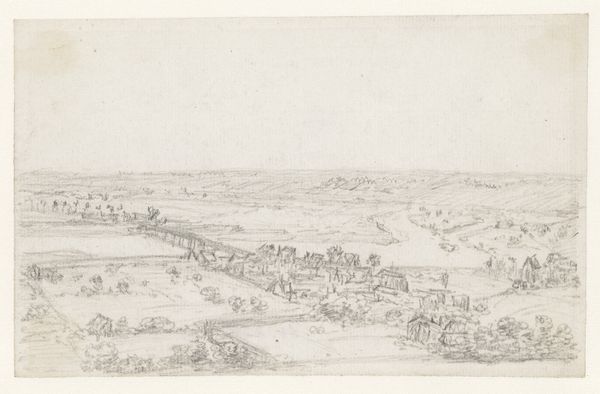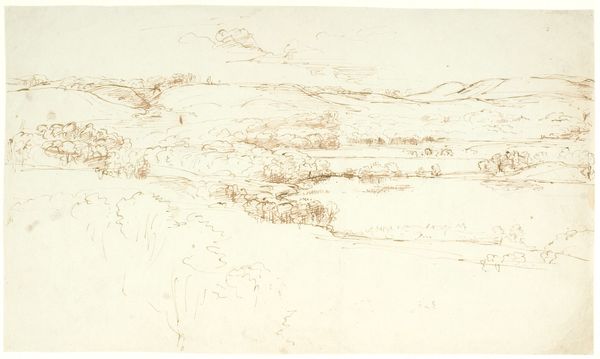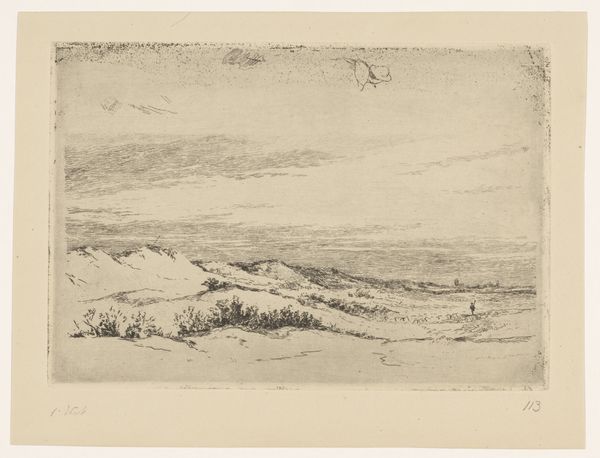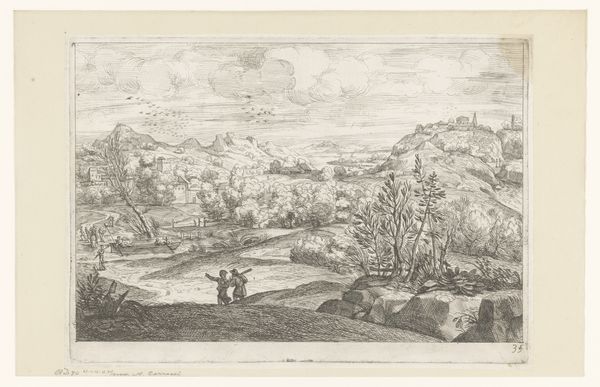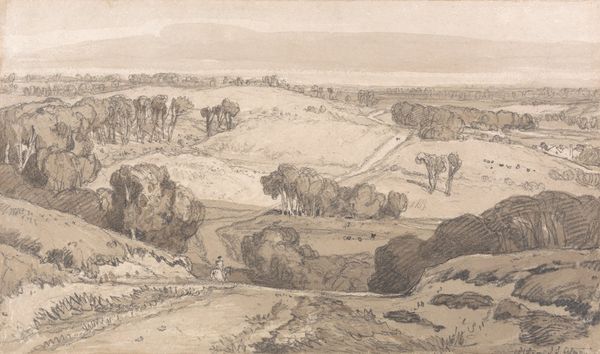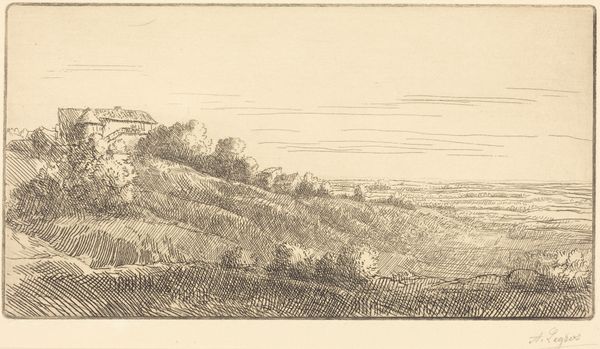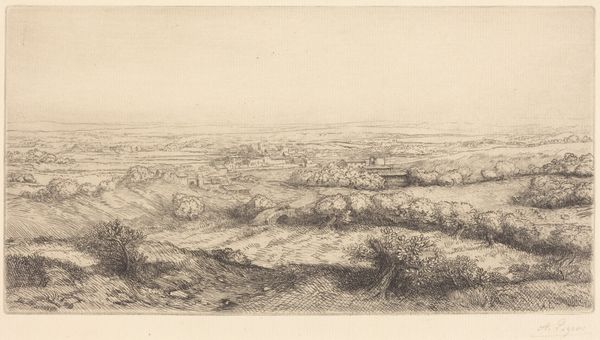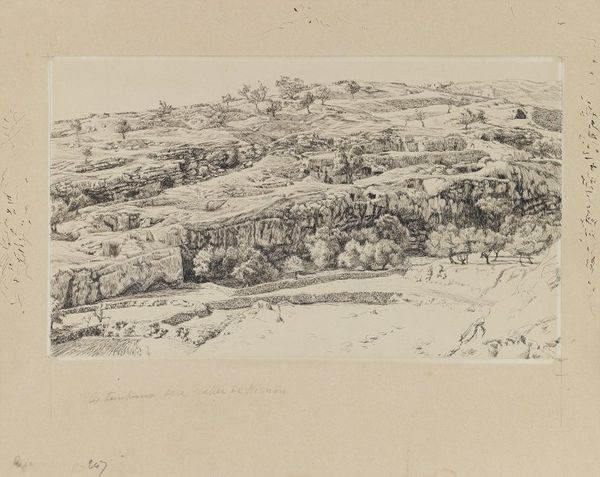
drawing, print, etching, paper
#
drawing
# print
#
etching
#
landscape
#
paper
Dimensions: 121 × 300 mm (image/plate); 130 × 307 mm (sheet)
Copyright: Public Domain
Editor: Here we have Donald Shaw MacLaughlan's 1909 etching, "The Billows," rendered on paper. There’s something about the hazy, almost dreamlike quality of the landscape that's really captivating. What do you see in this piece? Curator: Initially, the composition strikes me. Notice how the horizontal lines created by the distant hills are counterposed with the verticality of the trees in the foreground. This interplay establishes a compelling structural rhythm, a dialogue between distance and proximity. Also, the texture achieved through etching is critical; it simulates aerial perspective, creating depth within the two-dimensional space. Do you observe how the artist uses line density to suggest volume and light? Editor: Yes, I see how the concentration of lines creates shadows and depth. It’s all very subtle, though. Curator: Precisely. MacLaughlan doesn't rely on overt tonal contrasts. Rather, he uses a nuanced vocabulary of lines to define forms. The etching technique allows for incredible detail but also demands a certain economy. It’s about what is suggested rather than what is explicitly stated. Editor: That makes sense. So, you're saying the essence lies in its form and construction, and how it evokes depth using just line work and light… It makes you consider the power of restraint. Curator: Exactly. The materiality of the print also impacts the viewer's perception, the tactile nature of the paper inviting close scrutiny. By carefully calibrating each element of his work, MacLaughlan crafted a work where meaning arises purely from the formal relationships at play. It is a sophisticated investigation of space and representation, articulated within a very narrow bandwidth of tones and lines. Editor: Fascinating. It's much more complex than I initially thought, thanks to the emphasis on form and the technical skill evident in the etching process. Curator: Indeed, considering the form illuminates its visual impact.
Comments
No comments
Be the first to comment and join the conversation on the ultimate creative platform.
